by TRA
How can I
recognise fungus in a lens?
Can it be removed?
Q: “ Hello
How can I recognise fungus in a lens? Can it be
removed?”
A: Hello
The newest East German lenses for the
Pentacon Six are (in 2018) 28 years old. The
oldest ones may be more than 60 years old. It is
clear that much photographic equipment sold on the
internet has been neglected and badly stored for
decades, sometimes in extremely hot environments like
the attics of houses in summer, sometimes in extremely
damp environments, such as the cellars of some
houses. Both of these environments can cause
problems:
- When a lens is stored in an extremely hot environment, over years, the lubricant will “migrate” from where it should be (in the focusing helicoid) to where it should not be, the aperture blades, causing them to stick and not shut down correctly.
- When a lens is stored in an extremely humid environment, over years, the humidity can get into the lens, between the elements, and fungus may grow inside the lens. This is what it looks like:
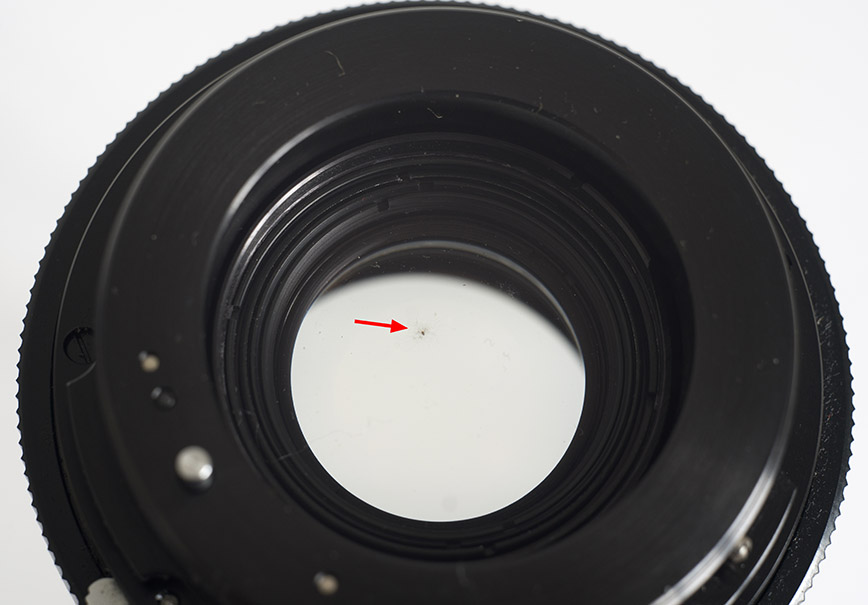 [fungus03.jpg] |
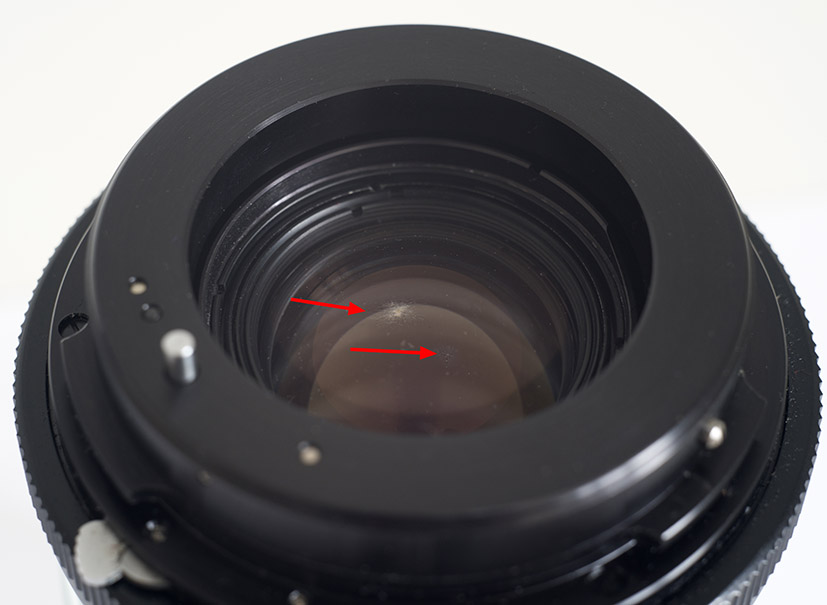 [fungus04.jpg] |
|
| At a casual glance,
this may be viewed as insignificant – or it may
not even be noticed at all. (At least, that
is the kindest interpretation that I can give in
respect of the person who sold me this lens via
the internet, describing it as “in perfect
condition”!) In the second image, the arrows point to the main problem areas. But let us look at this lens closer-up: |
||
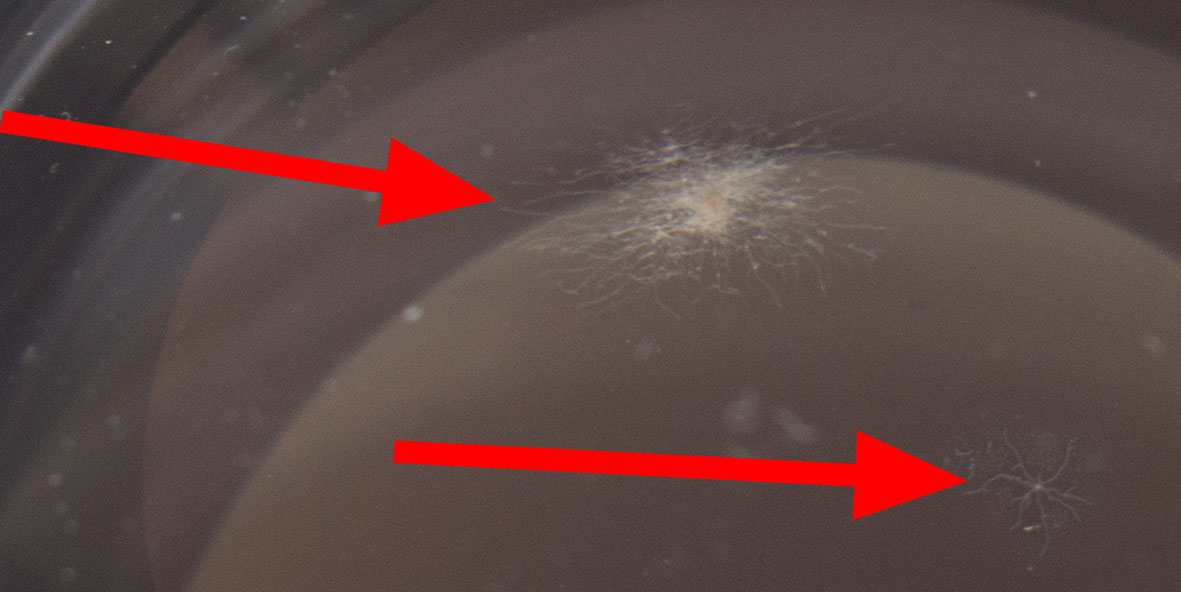 [fungus04_det.jpg] |
||
| This fungus will
only grow over time, and also eat into the lens
coating, and possibly eventually into the glass
itself. Moreover, this close-up shot shows
that the vendor did not even bother to clean the
specs of dust on the outer surfaces of the glass
before selling the lens – an indication that he
did not take care of his photographic
equipment. (The fungus itself is in fact inside
the lens, between the elements, not on the outer
surface.) Here are some other views of the same lens: |
||
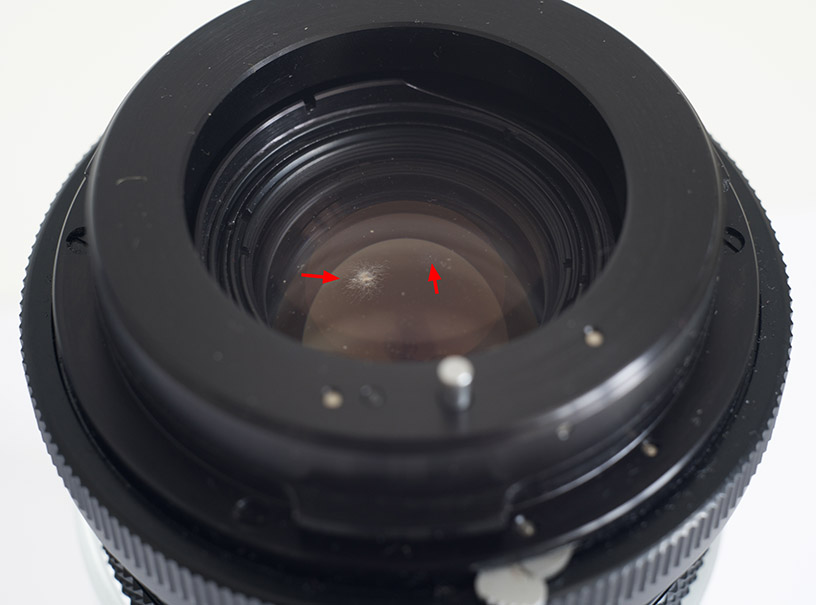 [fungus06.jpg] |
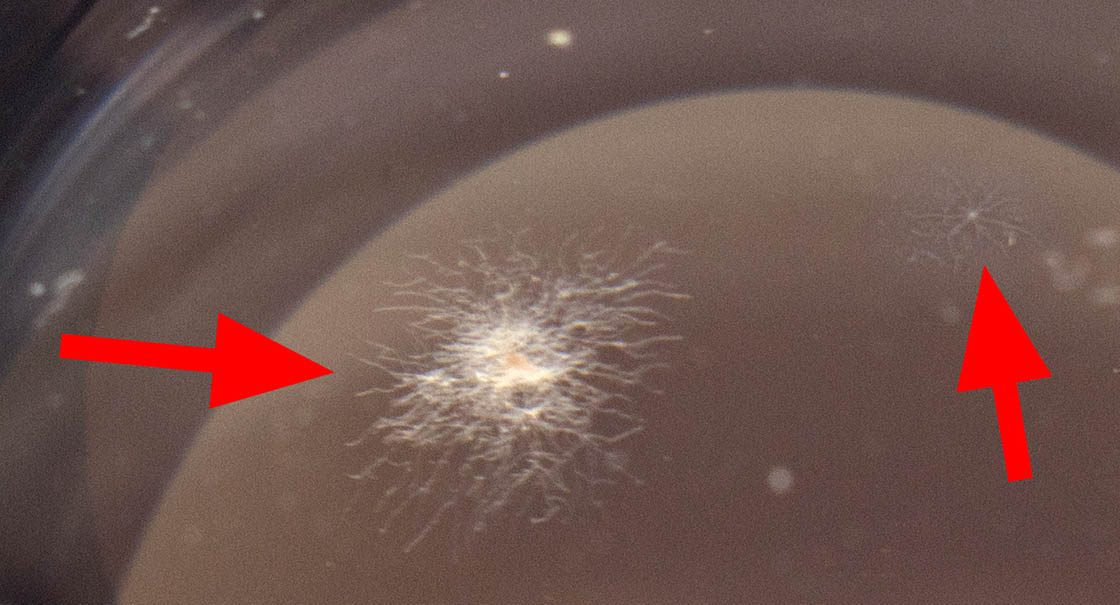 [fungus06_det] |
|
| Enlarging
a part of the photograph on the left shows how
serious the problem is. |
||
What is more, a large piece of dirt could be seen between the elements of the lens:
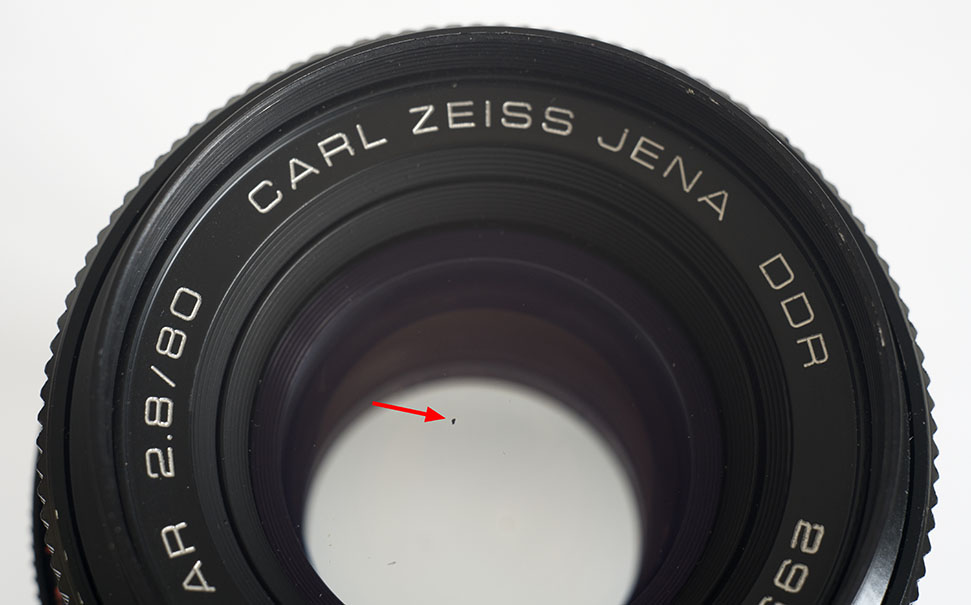 [dirt_in_lens.jpg] |
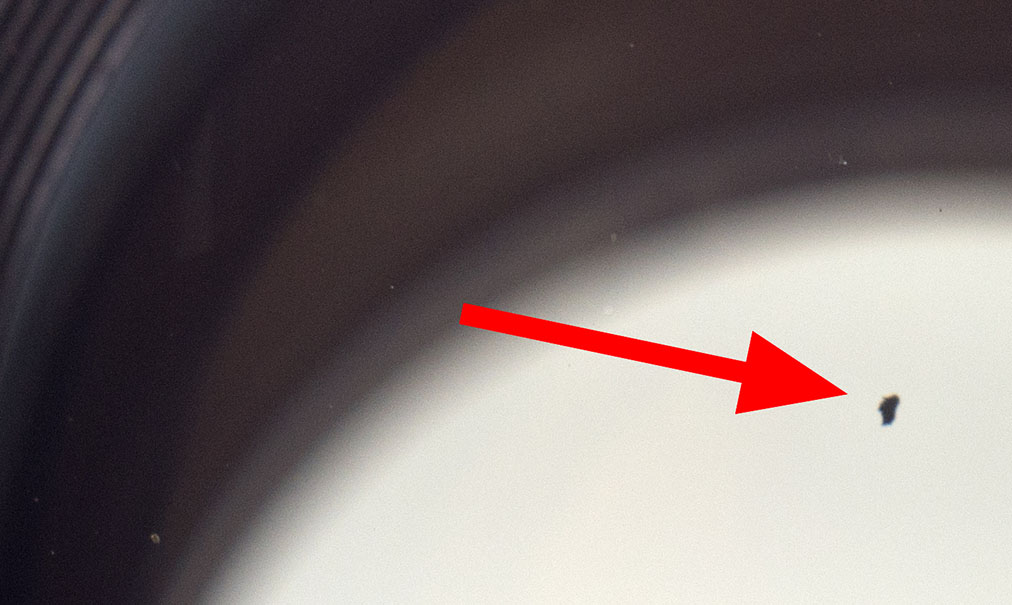 [dirt_in_lens_det.jpg] |
Carl Zeiss Jena assembled their lenses in a special lens “clean room”, and the elements were aligned with a collimator, to give the optimum results in terms of image resolution. It is clear that at some point a previous owner (or a self-styled camera repairer!) had taken this lens apart in a non-clean environment, and dirt, humidity and fungus spores had entered the lens.
Can a lens in this condition be rescued? If the fungus is caught early enough, before it eats into the coating, it can be. The lens needs to be disassembled in a clean environment and when the ambient humidity is low! and the fungus can often be simply wiped off. Obviously, a suitable soft and totally clean (preferably, new) lens cloth must be used, and the elements must be allowed to dry totally. They then need to be checked under a powerful loupe (magnifying glass) for any residues of fungus and any other dirt. If necessary, they must then be cleaned further, and finally, carefully reassembled in a dry and totally clean environment. A blower brush can be helpful, and one should definitely not breathe on the elements in order to clean them, since this introduces both humidity and possible microbes, which is probably how the problem was caused for this lens in the first case!
In the best of cases, the result of careful cleaning can be like this:
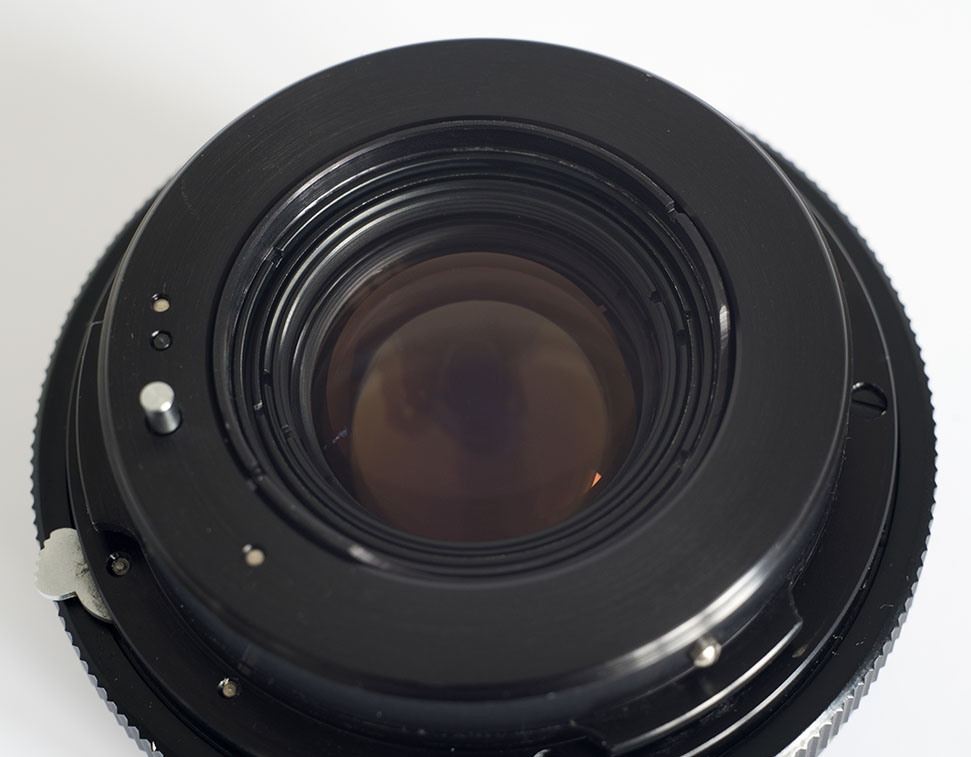 This really is the same lens! [minus_fungus.jpg] |
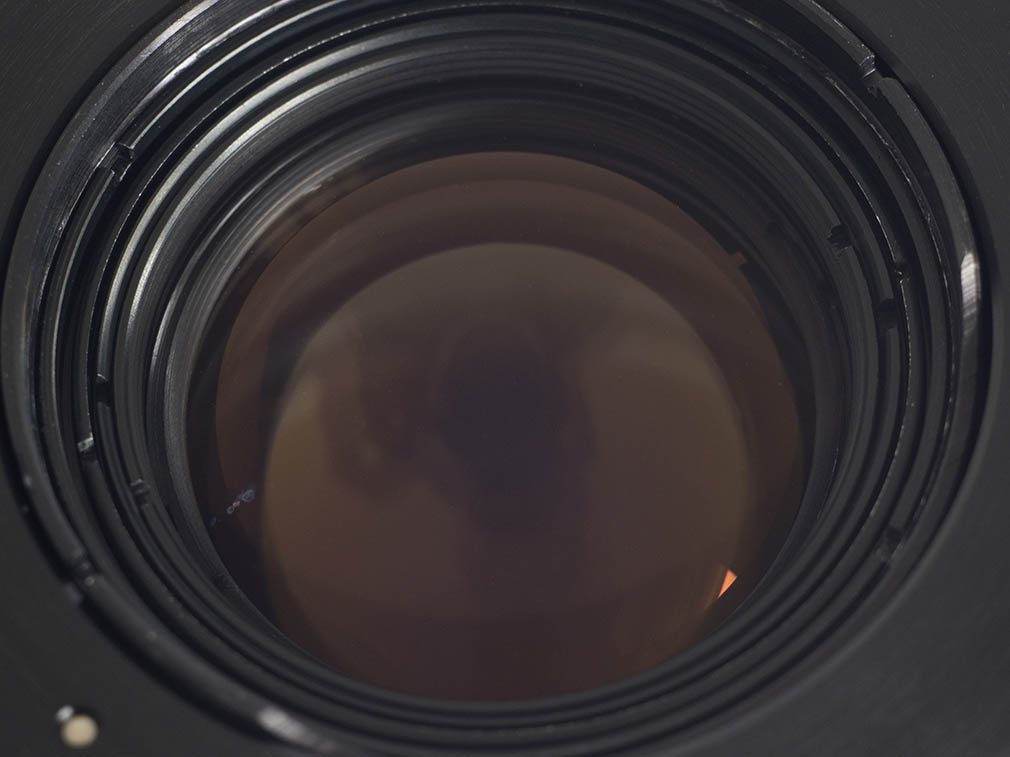 (The darker shape visible in this image is of course the upside-down reflection of me taking the photograph!) [minus_fungus_det.jpg] |
Thank you, Tom, for cleaning this lens!
I hope that this is helpful, and gives
you hope. The key is to find an excellent camera
technician.
With best wishes,
"Mr Pentacon
Six"
To go back to the frequently-asked questions, click here.
To choose other options, click below.
Home
© TRA First published: August 2018